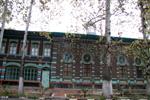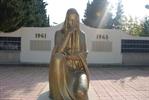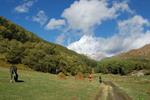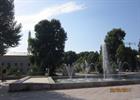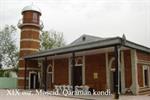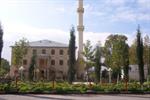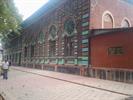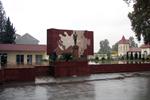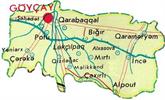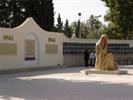Backed by curiously eroded mud-walled canyons Goychay has a pleasant central area full of plane trees that are claimed to be up to 400 years old, though the town itself was only officially founded in 1858. One of the trees was sliced in half 'by Armenian bombardment' during 1918. Its trunk has since grown 'miraculously' into a curious quintuple-stemmed 'hand' that some consider to have magical powers.
The name of the rayon was taken from Goychay River which means "Blue River" (Goy chay) in Azerbaijani language due to very clean nature and transparency of the river and light blue color of the water. Due to a 1859 earthquake in Shamakhi, many of its residents moved to west establishing a village of Goychay. Because of demographic growth, the Russian Imperial government created Goychay Uyezd within Baku Governorate during its administrative reforms in December 1867. The rayon was established as an administrative unit of Azerbaijan SSR on 8 August 1930.
The region is famed for pomegranates which you'll see on sale everywhere from late September. Sevinc company occupying the 19th-century hamam offers Naftalan mud-oil cures, while a nearby brick madrassa has been very colourfully repainted. The museum is well kept, you must wear slippers to look at the photos of old camel-drawn carts, the works of local poets Ali Karim and Rasul Rza, and the snapshots of the inaccessible Surxay Qala castle ruins.
Surxay Qalasi
In an Azeri variant on Taming of the Shiew, a local khan kidnaps the beautiful Lady Gulgaz and whisks her off to Surxay Fortress where she perversely falls in love with him despite her enforced captivity. Xosrov is one possible starting point for an attempt to reach Surxay's minimal ruins which sit on an inaccessible, perilously crumbly clifftop to the north (via Arabjabali/Kukar villages). Explorers venturing into a tunnel at the site claim that every time they entered their lamps mysteriously failed at the same point, nine metres in! The site is probably named after Khan Surkhay of Shirvan, who ruled 1721-34.




